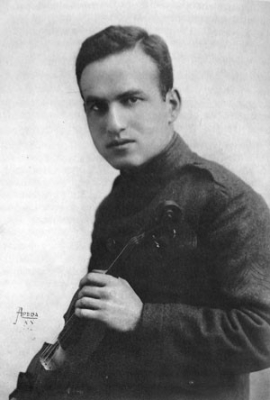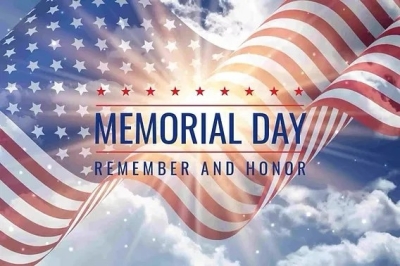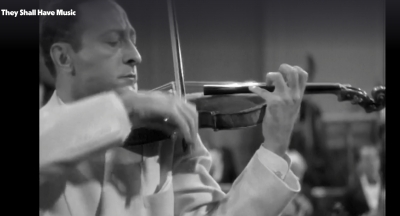Welcome to our forum. A Message To Our New and Prospective Members . Check out our Forum Rules. Lets keep this forum an enjoyable place to visit.
Currently working on errors from the latest (SimplePress) forum update. Many issues have been resoled and others are being worked on. Thank you for your patience.
 Topic RSS
Topic RSS



 (90 votes)
(90 votes) 









Seems like the other Forum regulars here have blogs, so rather than be an outlier, I figured I’d go ahead and start one.
I’m currently practicing a student Concertino I like, to work on (among other things) my bowing. Violin Concertino in the Russian Style, Op 35, by Aleksey Yanshinov (or Janschinow, depending where you look). I don’t think it is done often by students in the US; I found it on some lists in Europe, though.
I’ve found a couple of folks who recorded their playing of it on YouTube that I’ve posted below. I prefer the ramikable version: I think it is more expressive, or at least it is closer to what I hear in my head when I’m practicing it.
I’m currently working on the 3rd movement, working on speeding it up (at around 05:39 on ramikable version). ramikable plays it faster than Twiolins, which I like better--or at least, I like the sound of it better; I would probably "like" to just meander along 
ramikable version:
YouTube Video: Violin Concertino in the Russian Style (Yanshinov)
The Twiolins version:
YouTube Video: Yanshinov, Aleksey Violin Concertino Op.35 for violin+ piano
Characterize people by their actions and you will never be fooled by their words.










The duet tune my teacher & I played last week at the nursing home was an arrangement of I Come to the Garden Alone, by Catherine McMichael. It came from a collection of tunes she arranged called Hymns of Peace. The tunes in this collection contain violin duets with optional piano accompaniment, and viola & cello parts (for replacing violin 2).
Clip posted in Shared Video thread here:
https://fiddlerman.com/forum/s.....t/#p144509
Here’s a link to the Hymns of Peace sheet music collection for purchase:
https://www.sheetmusicplus.com.....gP-mssdvFT
Catherine McMichael is a prolific pianist/composer/arranger in Michigan. She is well known for her flute arrangements as well as many, many other things. Her husband is a violinist—I think this has influenced her violin arrangements in that the 2nd violin parts (all the ones I’ve encounter, anyway) are harder to play than the 1st violin.
These violin pieces can also be played with just the 1st violin, or 1st violin with piano accompaniment. Here’s an example—from her Anthems of America – Shenandoah (03:06 - 05:50):
YouTube Video: Three Anthems of America – Catherine McMichael (for violin and piano)
She has multiple sets of the Hymns of . . . series that are all like this (i.e., 2 violins, accomp. piano, optional viola/cello parts). I first came across her work when I found her arrangement of O Come, O Come Emmanual (Hymns of the Nativity – 2 volumes). The tunes in these collections are very approachable, with some 1st violin parts being Advanced Beginner/Early Intermediate (2nd violin being Intermediate).
I had communication directly with her via email a few years ago, when I was trying to get another copy of one her Hymns of . . . collections. She was changing publishers at the time, and so none of the online vendors had it in stock. She was very gracious, and I was able to purchase it directly from her.
Here's a link to her website – just amazes me how much music she’s got there:
Characterize people by their actions and you will never be fooled by their words.










I like this video’s explanation of Harmonic Progression. Some of Seth Monahan’s other videos in the series are pretty good, too.
YouTube Video: Lesson 17: Introduction to Harmonic Function
Fun visual of harmonic functions:
YouTube Video: Mozart et les fonctions harmoniques
Characterize people by their actions and you will never be fooled by their words.










I posted a tune in Stringy’s Party (The Lament Party of Sad Songs) called Roshan’s Lament.
https://fiddlerman.com/forum/p.....3/#p144607
It was written by a musician named Marianne Bouvette who plays harp. She says she wrote the tune for cello (she identifies herself as a beginning cellist) and piano, and was
“. . . inspired by the plight of migrants around the world, and performed it for the first time as part of a live show called “Roshan’s First Christmas”, a beautiful tale written by Flemish author and story teller Jan De Piere about a Syrian migrants first Christmas in Flanders."
Video of her playing it on the Cello:
Youtube Video:: Roshan’s Lament – easy Cello piece with free sheet music
A list of her music is here, which includes some free downloads:
Characterize people by their actions and you will never be fooled by their words.










The University of Georgia (UGA) in Athens, GA, has a music school, and has a really good Performing Arts Center that hosts many events every year.
While looking at the options, I noticed that the TwoSet duo (Brett Yang and Eddy Chen), who have been touring, will be performing there this October.
https://pac.uga.edu/event/twoset-violin/
They recorded an update video last month—a bit of a reflection on their hiatus from YouTube (apparently they've returned, having made some videos over the last month):
YouTube Video: Hi (TwoSetViolin)
Their reflections are relatable. I think taking a break from whatever routine you find yourself in to “reset” is a good thing– hate to use a cliché, but the phrase of “not being able to see the forest from the trees” comes to mind.
Characterize people by their actions and you will never be fooled by their words.










I recently indicated in a post under the repairs thread https://fiddlerman.com/forum/f.....r/#p144515
that I’ve come across Olaf the Violinmaker videos. What I’ve watched has been very informative. He has several videos where he explains the varies damaged instruments he is faced with repairing. It’s like watching Luthier Wild Kingdom.
I’ve posted one of Olaf’s videos below changing a chinrest. Like other chinrest changing videos, he talks about the different types of chinrests and their clamps. But what he does differently is show open sections of violins as he explains proper placement & tightening, demonstrating the effects on the instrument.
YouTube Video: How to put on a Violin Chinrest
Note: The second chinrest key he mentions (around 2:47, Gewa) is very similar to the one Fiddlershop sells--
Stradpet Chinrest Key:
https://fiddlershop.com/produc.....#038;_ss=c
This other video is of repairs Olaf does to a violin that has damage from a chinrest that was too tight, a problem that he mentions in the first video.
YouTube Video: Crushed Edge on Violin! Olaf Repairs Violin with Chinrest Damage
Characterize people by their actions and you will never be fooled by their words.
Regulars
 Offline
Offline








Really appreciate the video on Harmonic Function. Threw me for a loop at first, until I realized 'predominant' = 'subdominant'. 
Glad you found the video on over-tightening a chinrest. It's my biggest fear... and I do have one that needs tightening, but was thinking it could use a better piece of cork, first.










@ELCBK Subdominant & predominant are slightly different things.
Subdominant chord – chord specifically built on the 4th degree of the scale (like IV)
Predominant chord – chord that resolves to the dominant chord (so can be various chords, including subdominant chords)
Whenever I switch a chinrest, I’m concerned that I’m not tightening it the right amount. I have found that I just tighten it enough that there is a little resistance—and then I stop. No cranking down on it. And then I test it under my chin to make sure there’s no movement.
Characterize people by their actions and you will never be fooled by their words.










Ensemble Practice
I recorded some of my playing at my practice with the group my teacher gathers monthly.
Now that the weather is getting warm here in Georgia, I usually take my carbon fiber violin (& carbon fiber bow) to practice. Not that we’re playing outside, but I like to be a little more careful in the hotter weather. And, sometimes I like to stop & do quick errands afterward, and I don’t have to worry about leaving the carbon fiber in the car for short stops.
I’ll also take the carbon fiber in addition to my regular violin when we perform somewhere—as a back-up (for me, or someone else); in case of broken string, etc.,
This is not like a typical ensemble. My teacher plays 1st violin along with all those playing 1st (i.e., all the violins except me). I play 2nd. Only two of us are her students—others just come if and when they want to—most all are adult beginners.
Things common for an ensemble practice – practice is slow: almost always, you’re going to be practicing at a slower tempo before moving up to a performance tempo.
Practice is in sections: Just like practice at home, you work on sections, working on problem areas.
A practice session may not include all instruments: In this particular session, we did not have our cello, piano, or clarinet (yes, we have a clarinet player; if we have music that doesn’t have woodwinds, I’ll typically transpose the viola part to clarinet).
Practice notes are not always perfect: Yeah, I’m proof of that—sometimes, you just don’t have it right yet (like when you forget what key you’re supposed to be playing in), or you just mess up—but you keep going.
I think this is an important part of practice—how to keep going in a performance when you mess up. During a performance, when you make mistakes (and you will, at some point)—you don’t get to stop and start over. But it doesn’t have to be a train wreck. You just need to be able to keep your bearing (don’t make faces—like I just did in this session—ok, because it was practice ), identify where you are, and jump back in.
), identify where you are, and jump back in.
Practice Video:
Characterize people by their actions and you will never be fooled by their words.
Regulars
 Offline
Offline








@SharonC -
Thanks!
I just always thought of other chords (like the II) as 'acting as a subdominant' vs these chords as 'predominant'. ...another drop in the deep well of music terminology for me. 🫤
Anyway, appreciate you brought up Seth Monahan. He has an amazing array of video lessons - and I plan on watching more of them!
Enjoyed your practice. I admire how well your hard work has paid off!










@Mouse Thanks  The Sleeping Beauty arrangement we’re playing (guessing that’s the one you mean that was in Maleficent; we were also practicing Pachelbel Canon & Ode to Joy) is in Gmaj. There is a shortened arrangement at the 8notes site in the same key here:
The Sleeping Beauty arrangement we’re playing (guessing that’s the one you mean that was in Maleficent; we were also practicing Pachelbel Canon & Ode to Joy) is in Gmaj. There is a shortened arrangement at the 8notes site in the same key here:
https://www.8notes.com/scores/2478.asp
The chromatic stuff (half-steps) with the 8th notes can look a little scary at first because of the accidentals, but once you work out/decide the fingering (like starting m36 with the 1st finger & staying on the same string, e.g., on D string , (1) G# (2) A (3) B (4) A (3) B. . . , it’s not too bad.
Characterize people by their actions and you will never be fooled by their words.










@ELCBK Thanks  Yeah, I think Seth Monahan’s videos are excellent. And he starts the series at the beginning—Major Scales:
Yeah, I think Seth Monahan’s videos are excellent. And he starts the series at the beginning—Major Scales:
YouTube Video: Lesson 1: Major Scales
Anyone wanting to start learning some Music Theory—these videos are a good place to start.
Characterize people by their actions and you will never be fooled by their words.










How I started learning violin as an adult over 11 years ago:
Before I got a teacher, I played on my own for about a year and a half (and not daily; very haphazard). I started by using the Janice Tucker ABCs of Violin for the Absolute Beginner book and DVD:
Book I: http://www.amazon.com/ABCs-Vio.....0966373103
DVD: http://www.amazon.com/ABCs-Vio.....B000F5FMFS
I started with the Whistler book for scales:
http://www.amazon.com/Scales-P.....1423444868
When I started lessons with my teacher, I went through the O’Connor Method Books 1&2 (may appeal to folks who are more inclined to fiddle music vs classical—books are kind of pricey, though): http://www.oconnormethod.com/Store.html
And we started duets with the Pleyel Op 8 Six Little Duets. I started the Pleyel #1 by the 2nd lesson, btw; I didn’t like playing by myself—I found it easier if we played something together.
http://www.amazon.com/Pleyel-O.....B000ERTAUA
Also played through the 1st 2 volumes of the Applebaum Beautiful Music for Two String Instruments series (these are nice because most are short):
http://www.amazon.com/Beautifu.....0769231292
She also had me try exercises in this book, Fiddle Magic (she had just started using it):
http://www.amazon.com/WS8VN-Fi.....0849757169
And several Etudes in the Wohlfahrt Op 45:
Characterize people by their actions and you will never be fooled by their words.










May 26 2025 – Memorial Day
David Hochstein – American virtuoso violinist from Rochester, NY – joined the Army during WWI and was killed in action at the age of 25 during the Meuse-Argonne Offensive in 1918.
His biographical information is listed here in Wikipedia:
https://en.wikipedia.org/wiki/....._Hochstein
As noted in Wikipedia, in his honor, a music school was started in Rochester, NY in 1920 & still operates today. This music & dance school teaches both children and adults, with a variety of offerings for adults of all skill levels.
Characterize people by their actions and you will never be fooled by their words.










I watched this violin movie with Jascha Heifetz this past week for the first time: They Shall Have Music (1939).
Film description: After being taken in by a children's music school for the poor, a runaway saves the school from hard financial times with help from a famed violinist.
The film itself is ok, but what makes it worth the watch is Heifetz playing—some of the camera angles are so good (above him, right up on his left hand looking down the fingerboard, etc.,).
He performs Camille Saint-Saëns's Introduction and Rondo Capriccioso Op 28, Dinicu’s Hora stacco, Ponce’s Estrellita (Mexican Love Serenade), and Felix Mendelssohn's Violin Concerto, 3rd movement.
Also to note—the music school children in the film are musicians (The Peter Meremblum California Junior Symphony Orchestra), not actors, so they are actually playing, and playing well.
Available on Roku, Tubi, & Amazon Prime
Can stream here directly from Tubi or Roku without app:
https://tubitv.com/movies/1000.....have-music
Characterize people by their actions and you will never be fooled by their words.










Like playing violin isn’t hard enough.
In 1987, Christian Adam of Lubeck, Germany, set a world record for playing his violin while riding a bicycle backwards, riding 60.45 kilometers (37.56 miles) in 5 hours, nine minutes.
On his website, he explains that he came up with the idea while he was at a youth orchestra retreat.
Christian Adam is a violinmaker in Ahrensburg, Germany, and has a website here:
Characterize people by their actions and you will never be fooled by their words.
Regulars
 Offline
Offline






Regulars
 Offline
Offline








Wow Sharon, I don't know how 'They Shall Have Music' ever slipped by me! I remember seeing/enjoyed other films Gene Reynolds was in around the same time period, and I'm also a fan of Joel McCrea & Walter Brennan (Heifetz was great, of course)! It was available free on Amazon Prime.
Thanx for recommending it!
Was watching the violinist on the bike, but I NEVER see his feet move/pedal the bike!
Kinda funny I had recently become mesmerized by this couple... Beside the Seaside with Rimski & Handkerchief. And, what everyone wants to know - How Does Rimski Steer That Thing?
1 Guest(s)


 Log In
Log In Register
Register
















